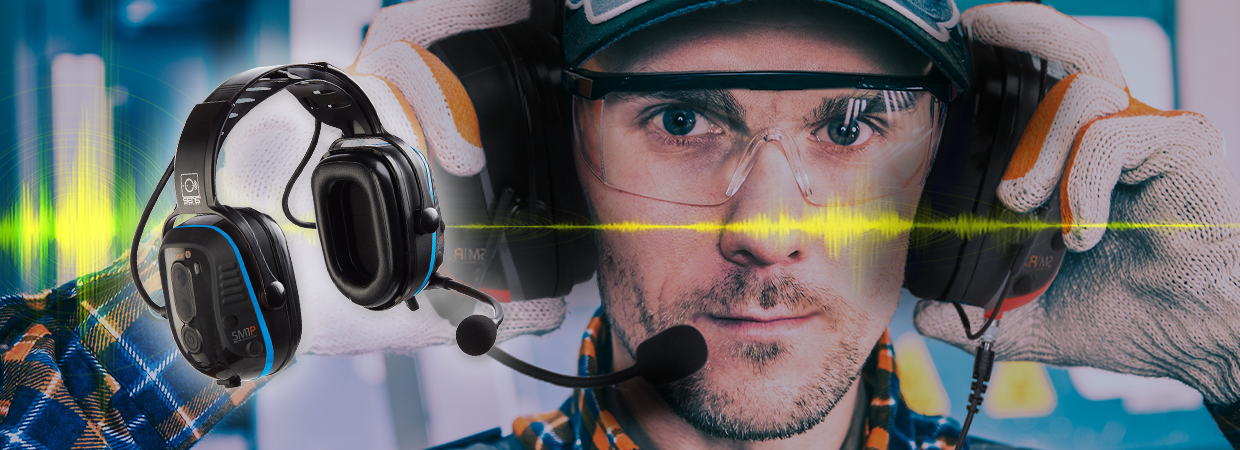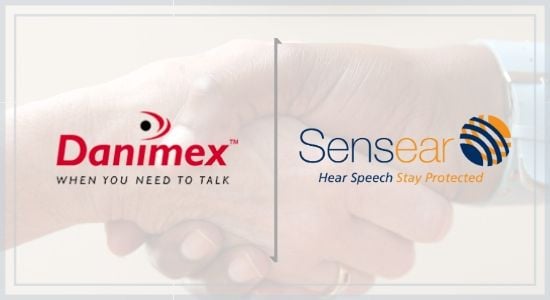- Home
- Blog
- Noise-Induced Hearing Loss
- The True Cost of Noise-Induced Hearing Loss Claims vs. Investing in Hearing Protection

The True Cost of Noise-Induced Hearing Loss Claims vs. Investing in Hearing Protection
Noise-induced hearing loss (NIHL) is a significant occupational health issue affecting millions of workers worldwide. While the costs associated with NIHL claims are substantial, investing in proper hearing protection can be a cost-effective strategy for employers.
Sensear explores the financial implications of NIHL claims compared to the investment in hearing protection, drawing from global data and trends.
The Global Impact of Noise-Induced Hearing Loss
According to the National Institute for Occupational Safety and Health (NIOSH), over 30 million U.S. workers are exposed to noise levels high enough to cause irreversible hearing loss. This exposure leads to an estimated $242 million annually in workers' compensation claims for occupational hearing loss in the U.S. alone.
Globally, the situation is equally concerning. The World Health Organization (WHO) reports that over 1 billion young people are at risk of hearing loss due to unsafe listening practices, including exposure to loud music and noise at work.
Financial Implications of NIHL Claims
The costs associated with NIHL claims extend beyond workers' compensation. Employers may face legal fees, settlements, and potential fines for non-compliance with occupational health and safety regulations. In some cases, litigation awards for NIHL claims have reached substantial amounts. For instance, in 2018, a U.S. construction company was ordered to pay $5 million in damages to a worker who developed severe hearing loss due to prolonged exposure to high noise levels without adequate protection.
These financial burdens can have long-term effects on a company's bottom line, affecting profitability and reputation.
The Cost of Hearing Protection
Investing in hearing protection is a proactive strategy that can save companies from the far greater financial and reputational costs associated with noise-induced hearing loss claims. High-quality hearing protection solutions, such as Sensear’s advanced headsets, typically start at several hundred dollars per unit, with dual protection models priced higher due to their enhanced noise reduction capabilities.
While these upfront costs may seem significant, they are minimal when compared to the potential legal fees, compensation claims, and damage to a company’s reputation resulting from inadequate hearing protection. Furthermore, implementing a comprehensive hearing conservation program—including regular hearing tests, employee training, and providing appropriate hearing protection—demonstrates a strong commitment to worker safety and regulatory compliance.
Ultimately, the investment in effective hearing protection not only safeguards employees’ health but also protects the company from costly litigation and lost productivity associated with hearing loss.
Comparative Analysis: The True Cost of Hearing Loss Claims vs. Hearing Protection Investment
|
Cost Category |
Estimated Impact |
|
Workers' Compensation Claims |
Hundreds of millions annually (U.S.) |
|
Legal Fees and Settlements |
Potentially millions per case |
|
High-Quality Hearing Protection Devices |
Several hundred to over a thousand dollars per unit |
|
Comprehensive Hearing Conservation Program |
A strategic investment demonstrating compliance and care |
This comparison underscores the substantial financial and reputational risks companies face when neglecting hearing protection. The upfront investment in premium hearing protection and proactive safety programs is a fraction of the potential costs tied to claims and litigation—making prevention not only responsible but financially prudent.
Trends in NIHL Claims and Litigation
Over the past decade, there has been a noticeable increase in the number of NIHL claims and related litigation globally. This uptick is attributed to heightened awareness among workers and stricter enforcement of occupational health and safety regulations.
In the United Kingdom, for example, the Health and Safety Executive reported a 15% increase in NIHL-related claims from 2010 to 2020. Similarly, in Australia, the number of NIHL claims lodged with the Fair Work Commission has risen by 20% over the same period.
These trends underscore the importance of proactive measures in preventing NIHL and the potential financial risks of neglecting hearing protection.
Industries Most Affected by NIHL
Certain industries are more susceptible to NIHL due to the nature of their work environments. The mining sector has the highest prevalence of hearing impairment, with 17% of workers affected. Other high-risk industries include construction (16%) and manufacturing (14%).
Additionally, sectors such as agriculture, transportation, and utilities also report elevated rates of NIHL among their workforce. Implementing industry-specific hearing conservation programs is crucial in these sectors to mitigate risks and comply with occupational health standards.
The Legal Landscape: Increasing Litigation Awards
Legal settlements and awards related to NIHL claims have seen an upward trend in recent years. In 2020, a landmark case in the U.S. resulted in a $10 million settlement for a group of workers who developed hearing loss due to inadequate protection. This case set a precedent for future litigation and highlighted the financial risks companies face when failing to implement effective hearing conservation measures.
Internationally, countries like Germany and Canada have also witnessed significant litigation awards in NIHL cases, prompting businesses worldwide to reassess their hearing protection strategies.
The Return on Investment: Protecting Hearing to Protect Profits
Investing in hearing protection is not only a regulatory requirement but also a sound business decision. Companies that proactively implement hearing conservation programs often experience reduced absenteeism, increased productivity, and improved employee morale.
Furthermore, demonstrating a commitment to employee health and safety can enhance a company's reputation, making it more attractive to potential employees and clients.
The financial implications of noise-induced hearing loss claims are substantial and continue to rise globally. However, the costs associated with investing in proper hearing protection are relatively minimal in comparison. By implementing comprehensive hearing conservation programs, employers can mitigate the risks and costs associated with NIHL, ensuring a safer and more productive work environment for their employees.
In the long run, protecting employees' hearing is not just a regulatory obligation but a strategic investment that benefits both the workforce and the bottom line.
Further Insights and Considerations
To support a more comprehensive understanding of the importance of proactive hearing protection, here are some additional facts and considerations:
- NIHL Is 100% Preventable: According to NIOSH, noise-induced hearing loss is completely preventable through engineering controls, administrative measures, and consistent use of hearing protection devices (HPDs).
- Permanent and Irreversible: Once damage to the inner ear occurs due to prolonged noise exposure, the resulting hearing loss is permanent and cannot be corrected through surgery or medication.
- Delayed Onset Masks the Risk: Many workers do not realize they are suffering hearing damage until it is too late. This "silent" nature of NIHL makes proactive prevention even more critical.
- Productivity Losses: A 2021 European Agency for Safety and Health at Work report indicated that employees with untreated hearing loss are more likely to experience communication breakdowns, fatigue, and lower productivity, especially in high-focus tasks.
- Insurance Premium Impact: Frequent or severe workers’ compensation claims—including those for hearing loss—can raise a company's insurance premiums, affecting operating costs over time.
- Psychosocial Effects: NIHL can lead to social withdrawal, depression, and decreased quality of life for affected workers, all of which contribute indirectly to lost productivity and morale.
- Hearing Tests Are Inexpensive: Routine audiometric testing typically costs $25–$75 per employee annually and is a simple, cost-effective measure to monitor and mitigate risks.
- Digital and Smart Hearing Protection: Newer technologies like electronic earmuffs or in-ear monitors can allow communication in loud environments while still protecting from damaging noise levels. These innovations are gaining traction in aviation, construction, and energy industries.
- High-Risk Job Functions: Specific job roles consistently report higher instances of hearing loss, including:
- Airport ground crew
- Construction equipment operators
- Sheet metal and fabrication workers
- Road and railway maintenance personnel
- Oil rig and refinery workers
- ISO and OSHA Standards: ISO 1999 and OSHA 29 CFR 1910.95 outline detailed methods for evaluating hearing conservation programs and legal thresholds for exposure, respectively. Non-compliance can lead to citations or legal actions in many countries.
- International Case Study – UK Construction Industry: A study by IOSH (Institution of Occupational Safety and Health) found that in the UK construction sector, 60% of surveyed companies had experienced hearing damage claims, with average payouts exceeding £12,000 per case.
- Litigation Outlook: In jurisdictions like Australia and Germany, litigation trends show increasing plaintiff success when employers fail to document active mitigation or monitoring of workplace noise levels.
Why Choose Sensear Headsets for Hearing Protection
1. Advanced SENS® Technology
Sensear's proprietary SENS® (Speech Enhancement and Noise Suppression) Technology enhances speech clarity while suppressing background noise. This allows workers to communicate effectively and maintain situational awareness, even in environments with noise levels up to 120 dB(A).
2. Comprehensive Hearing Protection
Sensear headsets deliver industry-leading hearing protection, with a Noise Reduction Rating (NRR) of up to 36 dB in our Dual Protection models—the highest available in the market. Other form factors provide slightly lower noise reduction levels, typically ranging 9 to 12 dB less, offering effective protection tailored to varying noise environments. This range ensures workers stay safe across different levels of noise exposure without compromising communication or comfort.
3. Enhanced Communication Capabilities
These headsets support multiple communication methods, including face-to-face conversation, two-way radio, FM Short-Range, and Bluetooth® connectivity. This versatility ensures seamless communication across various platforms, crucial for coordination in noisy workplaces.
4. 360° Situational Awareness
SENS® Technology enables users to maintain full 360º situational awareness by isolating and enhancing speech while suppressing background noise. This feature is vital for safety, allowing workers to hear alarms, machinery, and other critical sounds in their environment.
5. Industry Certifications and Compliance
Sensear headsets meet international hearing protection standards, including ANSI S3.19, ANSI S12.6, AS/NZS 1270, EN352-1, EN352-3, and EN352-6. They are also compatible with hearing aids, accommodating workers with pre-existing hearing loss.
"Using things like ear buds just agitates the tinnitus making it louder. So being able to choose what I hear and communicate, without removing my ear defense along with the way the ambient noise is suppressed in the Sensear headset, is a massive help."
- Hilcorp Alaska
Industries Benefiting from Sensear Headsets
Sensear headsets are trusted by over 150 leading industrial companies worldwide, including those in:
- Oil & Gas
- Mining
- Data Centers/ICT
- Transportation
- Manufacturing
- Food Processing





.png)


